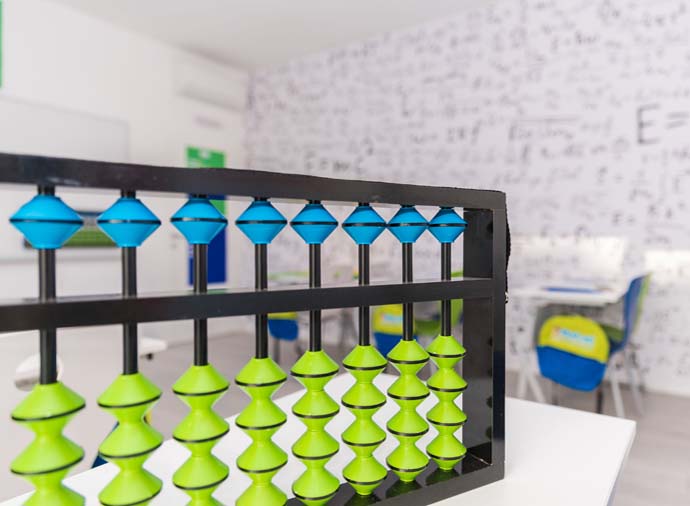-
What is Abacus?
When we define the term Abacus, we have to be really careful and pay attention to its characteristics. Most simply said the abacus is an ancient calculation device.
However, we can’t identify Abacus as a calculation device because we can’t calculate on it! It actually helps us calculate, but without automation, because the calculation is performed in the mind of the person who is using the Abacus.
-
Why Abacus?
Experience shows that children in countries where there is a tradition of calculating on abacus more easily understand the notion of a number and better accept mathematics.
Abacus, as a popular calculating device for children, adds that numbers are becoming more specific. Showing numbers through different beads pattern in space, the numbers are materialized and easier to understand.
Countries like Japan, Korea, Taiwan or China are always highly positioned on the global ranks of knowledge. As a good example, this thesis can serve the results of PISA tests, which are used to make an international assessment of student knowledge in terms of functional knowledge.
-
How to calculate on Abacus?
With classical calculations with pen and paper, we always start with ones, then with tens, next with hundreds, etc. Calculation on abacus is performed the opposite direction, starting with the column with the highest value, and slowly approaching to the ones column. That way, we develop more natural understanding of the size of the number.
Abacus consists of a rectangular frame, which is divided with the splitter into the upper and lower fields. There are several vertical poles through the splitter, on which there are beads, one on each pole in the upper field, and four on each pole in the lower field.
Calculation on Abacus is done by moving the beads, which are considered to be calculated if moved towards the splitter (the bead from the upper field has to be moved down, and the beads from the lower field up). Value of the beads changes in a row on the columns in the right-to-left direction, from the ones column to the tens, hundreds, etc. In the first column, the bead from the upper field has a value of 5, in the second column the value of 50, in the third column the value of 500, etc.
The beads from the lower field have the value: in the first column of 1, in the second column of 10, in the third column of 100, etc. With this structure of abacus, as mentioned above, it is possible to show even the complicated numbers in an easy way.



